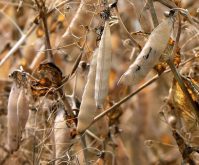Right on schedule, anthrax has shown up in southern Manitoba.
A federal veterinary health official warns that more may appear as the summer wanes.
“There may be more cases,” said Sandra Stephens of the Canadian Food Inspection Agency after four farms discovered 15 cases of anthrax in the Pilot Mound area.
“In years when we have wet conditions followed by dry, it’s often August that we start seeing more cases. We may not be out of the woods yet.”
The Red River Valley and much of southern Manitoba have experienced ideal conditions for anthrax outbreaks this growing season. Heavy spring rains saturated soil and caused extensive flooding through mid-summer, but in recent weeks many of those fields have dried up.
Read Also

Increasing farmland prices blamed on investors
a major tax and financial services firm says investors are driving up the value of farmland, preventing young farmers from entering the business. Robert Andjelic said that is bullshit.
“When we dig soil up or have flooding, anthrax spores can be brought closer to the surface,” said Stephens.
Cattle can become sick from drinking water containing anthrax spores or from eating vegetation and soil that contain spores.
Anthrax is a tough disease. Its spores can survive decades in the soil and some probably still survive from the days of the buffalo, Stephens said.
That explains how an outbreak can occur in an area that has not had a case for decades, as happened last summer in a herd in Saskatchewan.
“It can be almost anywhere.”
The herds on the four Manitoba farms have all been either treated with antibiotics and vaccinated or just vaccinated.
Producers in areas that tend to have anthrax cases, or are experiencing anthrax-producing conditions, should talk to their veterinarian about whether to vaccinate.
Producers whose cattle die suddenly should contact their veterinarian immediately. Some cases of anthrax cause cattle to bleed from their orifices, but not all do.
Producers should not attempt to discover a dead animal’s cause of death by doing their own dissections, Stephens said. Anthrax spores can be released this way.
A veterinarian concerned about the possibility of anthrax will test a carcass by non-invasive means, such as taking blood from the animal’s jugular vein.
“We don’t want people cutting into carcasses,” said Stephens.
Humans can get the cattle disease, but it is different from the strains developed by human germ warfare programs, which tend to infect the skin rather than the lungs.
















